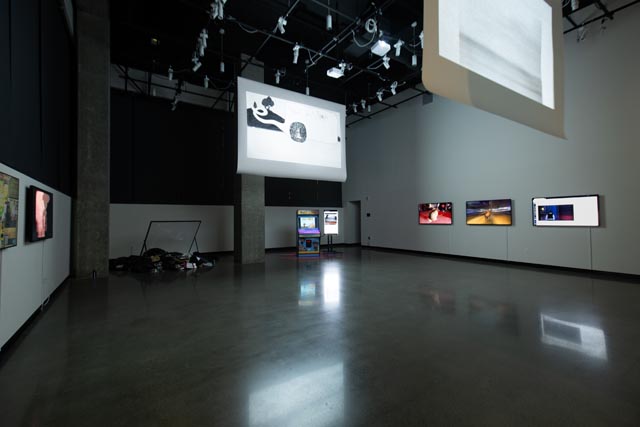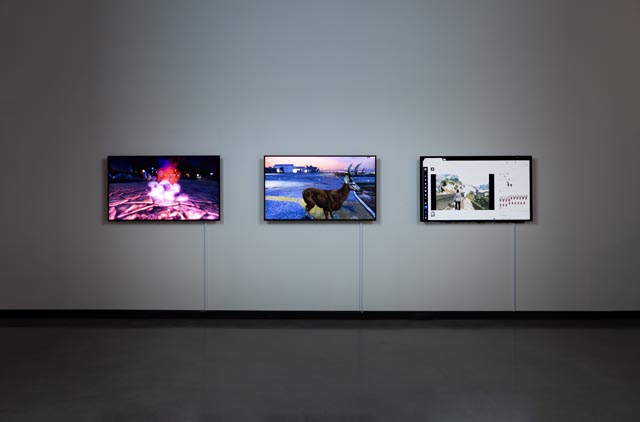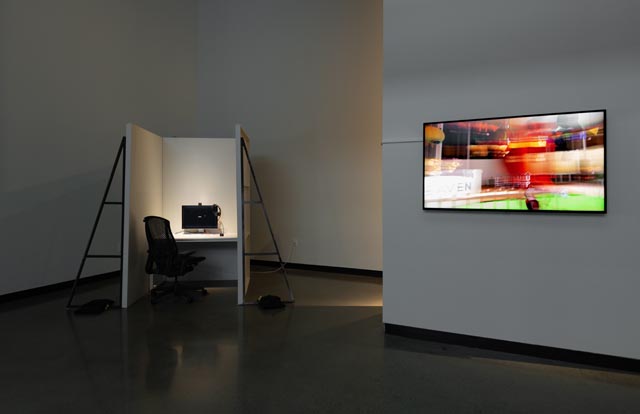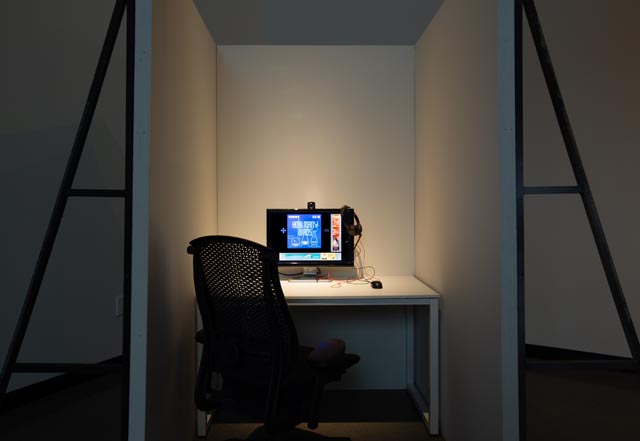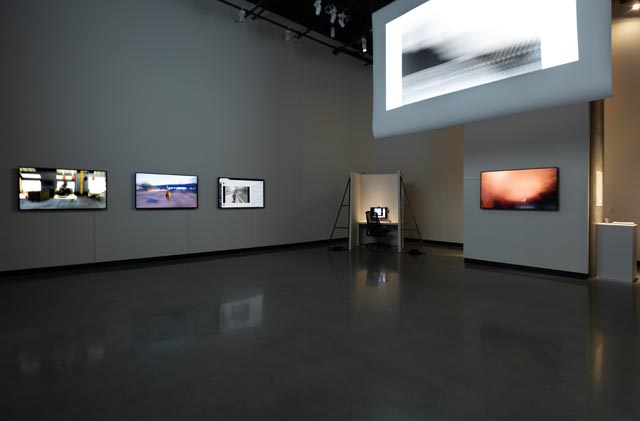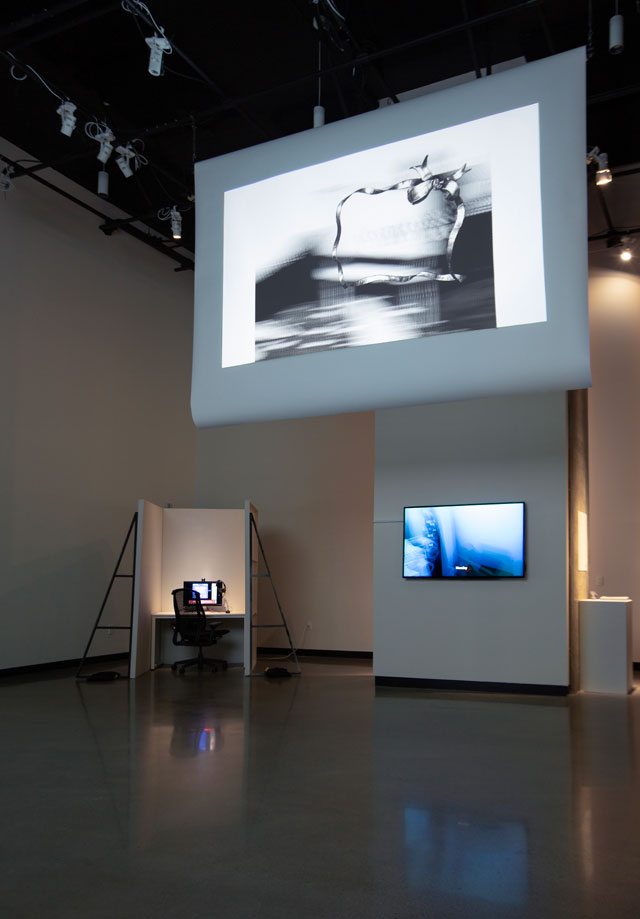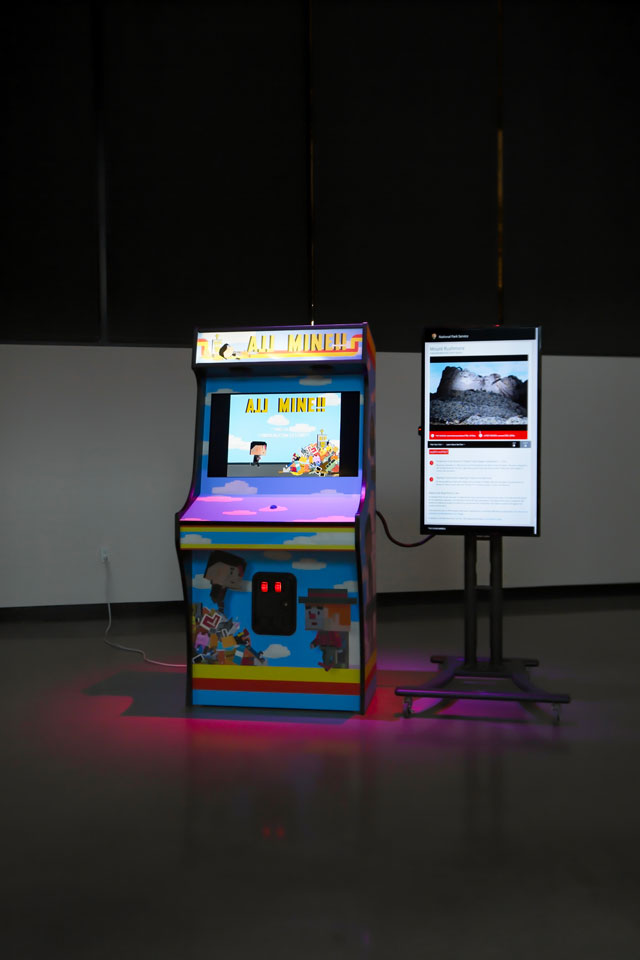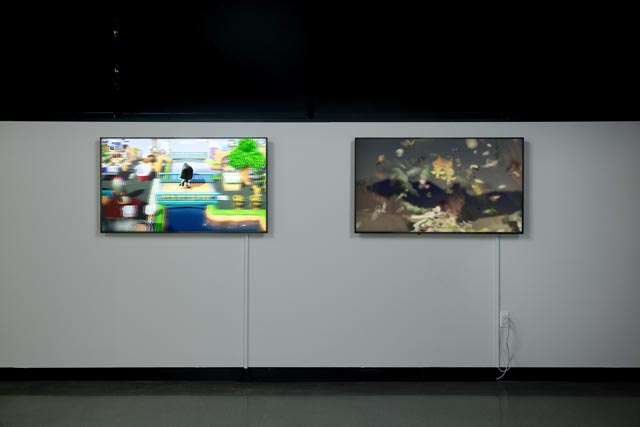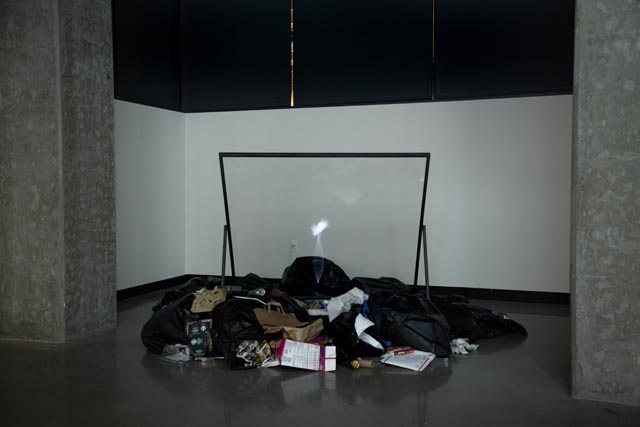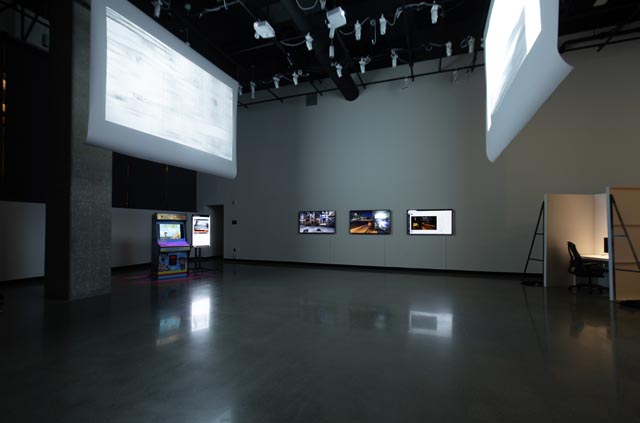One Tethered Bird
2025, computer-controlled installation
Custom computer applications, custom arcade machine, microcontrollers, Pepper's Ghost apparatus, video projectors
In Brent Watanabe's mesmerizing New Media works, animations, and art installations, hapless animals are stuck in loops of cause and effect. Scurrying mice provoke a cat which makes a dog bark which frightens a bird. We feel deep sympathy for these animals, made of pixels or robotics, and the ridiculous import of their repeated, interconnected, quotidian actions. They are, after all, stand-ins for us.
Watanabe has called this kind of existential system "a vaudevillian purgatory," a phrase that spotlights the absurdity of these unresolved cycles of consequence and inconsequence. Pulling inspiration from video games and cartoons, Watanabe creates tragi-comic sequences that encompass love, fear, chaos, and mindless repetition.
His characters often inhabit bleak, man-made environments, creating tension between these natural creatures and their surroundings and hinting at human and societal foibles and flaws. And yet the simple animal behaviors and their endearing forms allow humor and tenderness to permeate the scenes. The artist likens his use of animal characters to the role that animals play in fables, where human morals, traits, and behaviors are distilled and communicated through recognizable archetypes. But whereas traditional fables might overtly warn against laziness or ignorance, Watanabe immerses us in emotional experiences that murmur about overconsumption, environmental impact, or violence.
For the first of his video game interventions, San Andreas Streaming Deer Cam (2016), Watanabe figured out how to modify a character in Grand Theft Auto V, programming a deer to "play itself" through the vast world of the video game. In this work, we follow the stag as it moves through the game's uncanny city in California, crossing freeways, walking on the beach, bolting through neighborhoods, and encountering the incessant violence that the game is known for. The deer compels us to witness the violence in a new way as characters unleash relentless punches and bloodletting gunfire upon him. While we can become numb to human-on-human violence, ascribing it to malicious intent or corrupt social structures, our feelings about the animal's innocence and vulnerability expose the staggering brutality around him.
Existential sensitivity has been part of Watanabe's creative practice for decades, but he didn't start out modifying video games or creating New Media art. In fact, his entry into the world of art, as a teenager, was through hand-drawn posters for rock and punk shows. That led to majoring in painting at the University of Washington, but an increasing impulse toward realism, along with the desire to capture time and motion, led to years of picking up skills in film, video, animation, and programming. Drawing has remained, however, in the processes of ideating and creating characters, some of which can be seen endlessly waddling, scurrying, or flying through his works.
In this exhibition, which gathers work from 2006 to 2024, you'll see various kinds of animals, including humans, who are, after all, always present as viewers or players of Watanabe's works. Several pieces use human player characters, as with All Mine, a recently completed arcade game that involves the trope of the "endless runner" who jogs and jumps his way through a cityscape, collecting consumer goods and prizes along the way, which end up being dumped onto Mt. Rushmore in a "live stream." This more frequent and direct use of a human character may mirror Watanabe's increasing "call to engage" and his considerations of "the role art might play in the popular public consciousness."
But birds still make the most frequent appearances in Watanabe's work, appearing in situations that contrast with their typical associations with freedom, transcendence, and spirituality. In Watanabe animations and computer-controlled installations, birds are often earthbound, ceaselessly walking through a desolate landscape or tethered to a pile of detritus. From time to time, they also glow, give birth, transform, and fly.
Essay by Gayle Clemans, writer, art historian, and Co-Chair of the Art Department, Cornish College of the Arts
Documentation photography: Stefan Gonzales
Venues
One Tethered Bird, The Behnke Family Gallery, Seattle, WA
